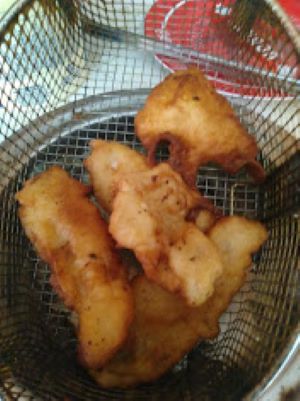
Flounder Fishing in the Minas Basin
Most restaurants in Nova Scotia use haddock in their fish and chips but at home, I use flounder . My family heads out in Mid June to early July to Houston Beach (below Blomindon) to catch some for supper and some for winter provisions.
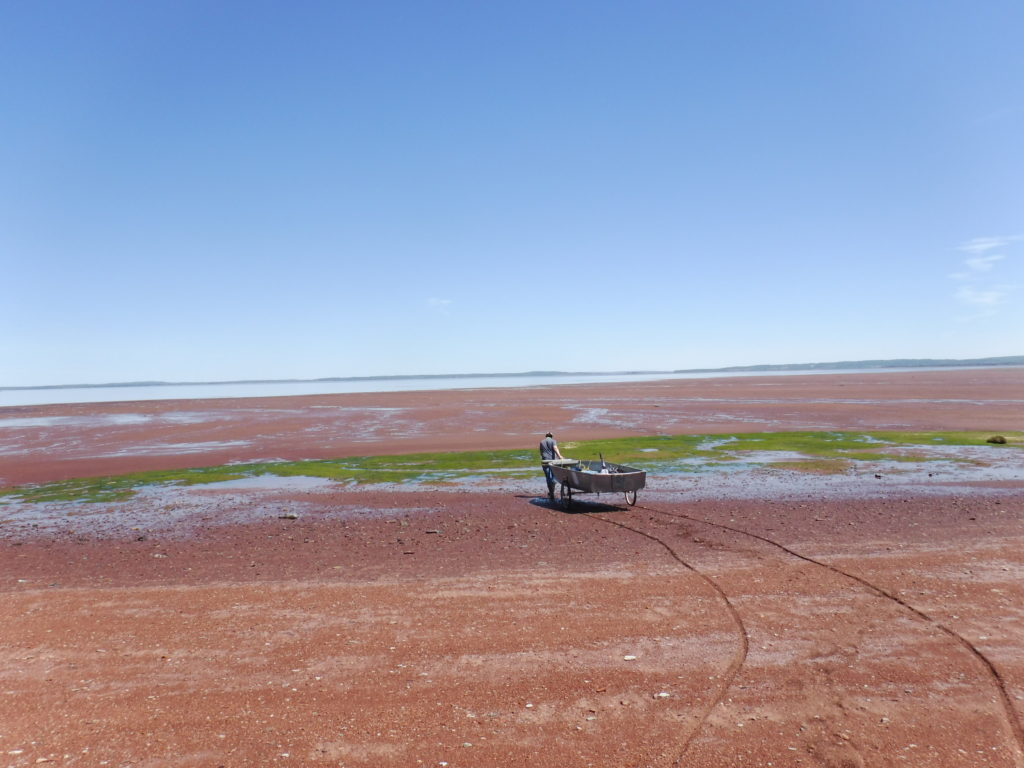
Like all Bay of Fundy adventures, this one is tidal. (Find time times for Blomidon here) The plan is to wait for the tide to come in and lift us off the bottom, so with the help of a set of bicycle wheels set on an axle, we push- pull it down closer to the water line. Our crew usually tries to be there about 3 hours before high tide, but it doesn’t have to be this early. Remember, the earlier you are, the farther you’ll need to manhandle that boat down through the mud. It’s a bit of a workout.
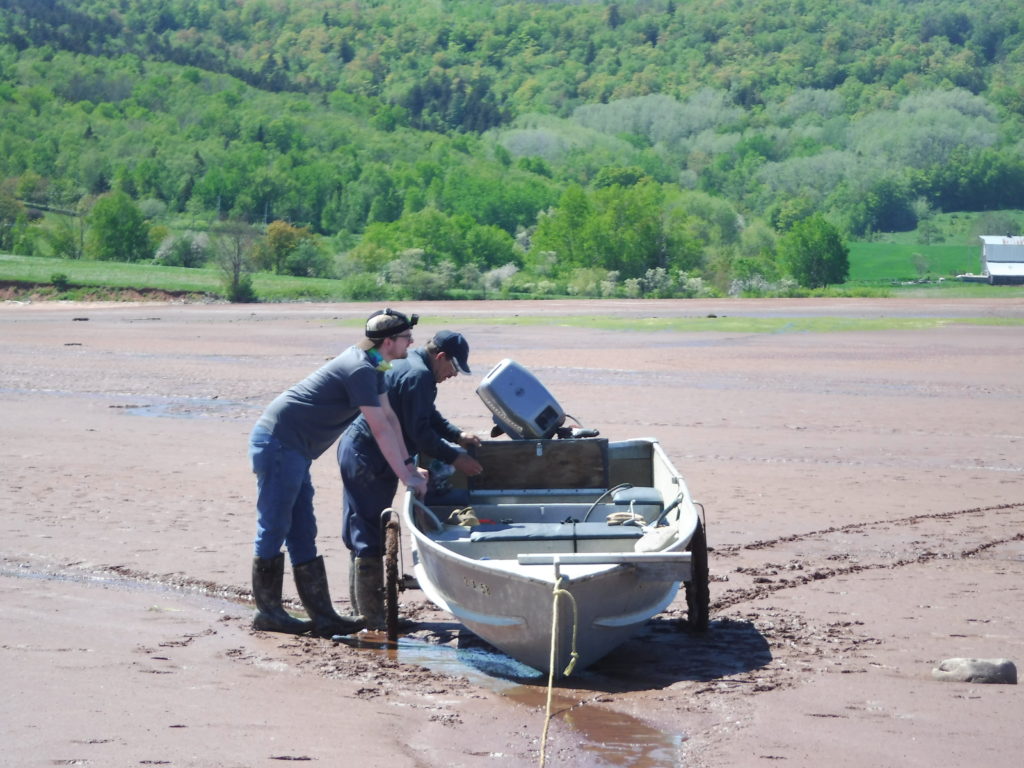
The gear-You can use a regular rod but we use hand lines. These are geared up to have two snell hooks attached to a leader bar. Have a pair of pliers or multi-tool and a knife.Yes, quite often they swallow the hook.
We have an 14 foot aluminium boat with a 9.9 HP motor that has definitely seen better days but still very safe and sea worthy. This goes without saying, but make sure you have oars, a bailer, and life jackets for each person. Sunscreen is a must-the sun on salt water will burn you to a crisp.
The bait. We usually use dew worms-the ones that crawl out at night after a rain. YUCK!!!
I hate this part-I use them, but I hate it. Store these disgusting slimy things in a cool area with a layer of dirt to keep them alive Good thing the end result is worth it.
The method. After baiting your hooks, lower the hand line into the water until it touches bottom.This is where the bottom feeding flounder lurk. Bounce your hooks off the bottom with small jerking motions. The tidal current will feel like you have a fish on-but when you actually have a fish on, you’ll feel a slight pull and a weight on the line. Have a container (we use a large feed sack) to put the fish in after you take them off the line. The limit is 10 flounder per person. Small ones should be carefully removed from the hook and put back in the water.
It’s usually best to end your trip close to high tide – your boat can be hauled out of the water without such a long trek across the mud,
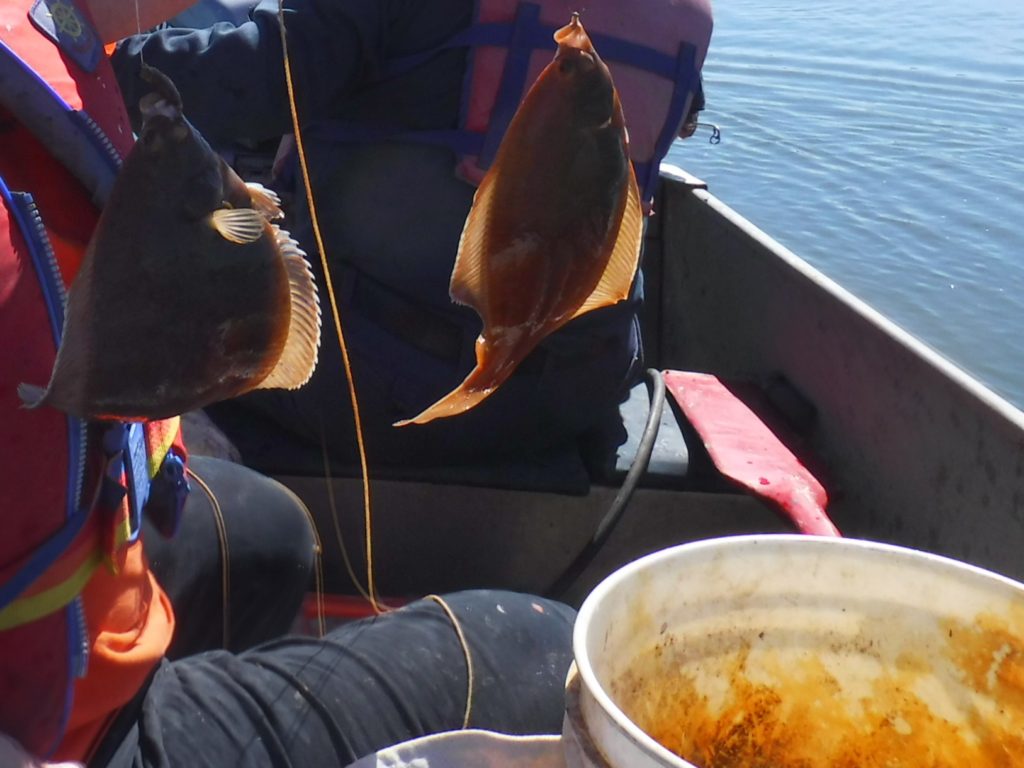
Cleaning Your Catch. I usually avoid this part like the plague. But my guys make a cut on each side of the fish diagonally from top to about a third of the way down to just below the gut, avoiding the gut sack and taking care not to nick the gut. Again, YUCK. Just cut the skin and not the fillet beneath.Then grab a rag to hold the fish(cause they are slippery) and pliers. Grab the skin with the pliers and rip it off! Like waxing,ladies.
Carefully slide your knife under the fillet and slide the knife along, separating the fillet from the backbone, again taking care not to nick the gut. Repeat on the other side.
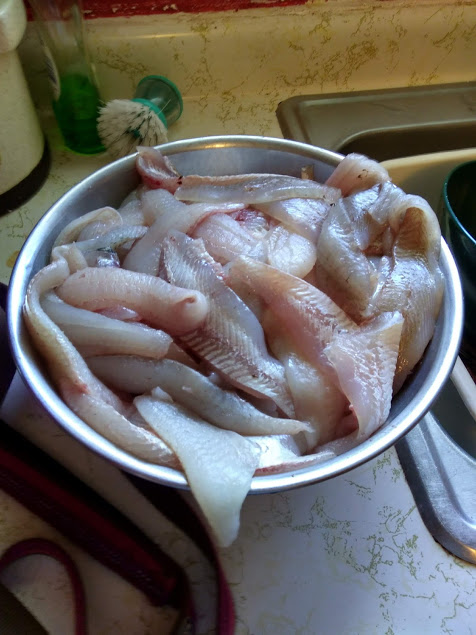
Thoroughly wash each fillet several times in cold fresh water. We pack the fillets in meal size portions in freezer bags and then fill the bag with water-this protects against freezer burn.Freeze and voila! Flounder throughout the winter!



